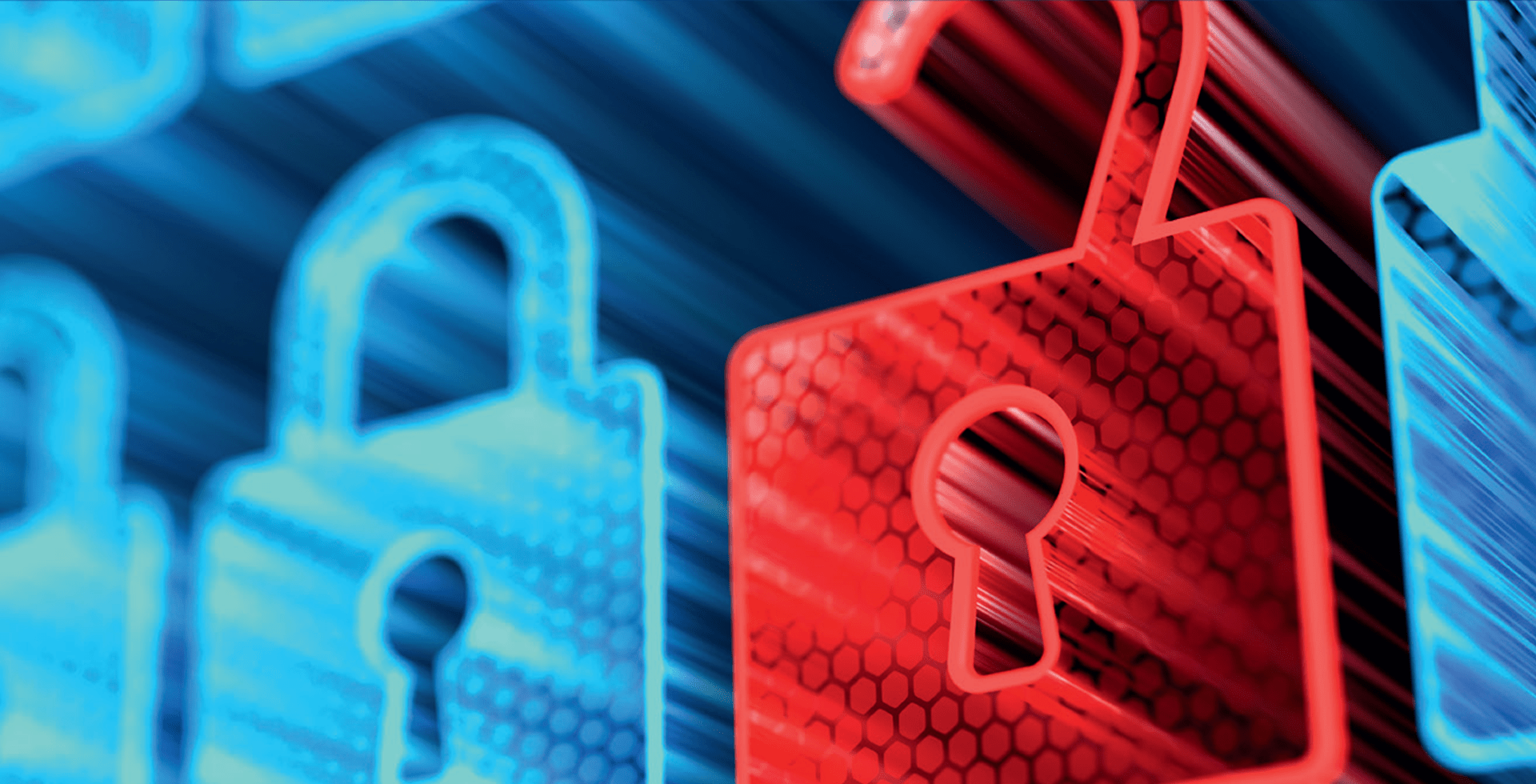Creating investing opportunities by fighting cyberthreats

Summary
The attack was caught before it could inflict harm. On 8 February 2021, hackers remotely accessed the city of Oldsmar’s water treatment plant in Florida and increased the level of sodium hydroxide by 111 times.
The attack was caught before it could inflict harm. On 8 February 2021, hackers remotely accessed the city of Oldsmar’s water treatment plant in Florida and increased the level of sodium hydroxide by 111 times. At these levels, the 15,000 residents would have fallen seriously ill. Luckily, the water never reached their homes - the Florida water treatment hack was foiled.1
 More recently - on 9 May 2021 - a hacker group called Darkside, launched a ransomware attack, which shut down an essential US energy pipeline. The Colonial Pipeline transports 2.5 million barrels of refined petroleum products from the US Gulf Coast to major US cities on the East Coast.2 The disruption led to panic buying at US gas stations and threatened to cause significant economic damage. It is reported that the organisation had to pay a USD 5 million ransom to receive a key to recover data that have been encrypted by the hacker group.3
More recently - on 9 May 2021 - a hacker group called Darkside, launched a ransomware attack, which shut down an essential US energy pipeline. The Colonial Pipeline transports 2.5 million barrels of refined petroleum products from the US Gulf Coast to major US cities on the East Coast.2 The disruption led to panic buying at US gas stations and threatened to cause significant economic damage. It is reported that the organisation had to pay a USD 5 million ransom to receive a key to recover data that have been encrypted by the hacker group.3
Just 3 days later, the same hacker group attacked the North American division of German chemical distributor, Brenntag, resulting in ransom pay out amounting to c. USD 4.4 million, as a part of the group’s campaign targeting critical industries in North America.4
These are just a few examples of the gravity and severity of cyberattacks.
To put this into context, as per a University of Maryland study, hackers attack on average 2,244 times a day, which approximately equates to once every 39 seconds.5 Many companies are often unaware that they have been attacked, while others choose not to disclose these events due to fear of reputational damage.6 The frequency and magnitude of these attacks is only set to increase as our world becomes even more digitally connected.
Let us go through a few of the threats that companies face.
Threat 1
Lack of sufficient cybersecurity capabilities
At the start of the pandemic, companies were forced to send their workforce home and their IT infrastructure was stretched beyond imagination. It presented the perfect opportunity for cyber attackers to strike.
The video conferencing tools that employees started to use to communicate were particularly vulnerable. According to Deloitte, nearly half a million workers had their personal data stolen from cyber weaknesses caused by video conferencing software during the first lockdown.7
 Ransomware attacks, identity fraud and phishing campaigns all rose significantly during this period. Brute force attacks which used password cracking tools and account checking tactics were also used frequently to log into online accounts. Bank fraud and identity theft also became widespread.
Ransomware attacks, identity fraud and phishing campaigns all rose significantly during this period. Brute force attacks which used password cracking tools and account checking tactics were also used frequently to log into online accounts. Bank fraud and identity theft also became widespread.
According to IBM, the average cost of each data breach that a company experienced in 2020 was USD 3.86 million. Statistically, it took on average 270 days to identify a breach, while it took an average of 280 days from the point the breach was identified until it was fully contained.8
Ransomware, an extortion software that encrypts your data demanding a ransom for its release (Kaspersky) and the fastest growing malware according to the US Department of Justice, reportedly starts to encrypt the victim’s files in only three seconds. 9 Moreover, the highest reported ransomware pay out amounted to in excess of USD 4.5 million. 10 Such calibre of crime leaves people and organisations damaged and powerless.
Threat 2
The exponential growth in data
 Cybercrime is likely to rise considerably even after the pandemic. The exponential growth in insufficiently secured data in the digital world that we are entering is prone to be a major factor.
Cybercrime is likely to rise considerably even after the pandemic. The exponential growth in insufficiently secured data in the digital world that we are entering is prone to be a major factor.
As of 2020, there were 7.83 billion people living on Earth. 66% owned a mobile phone. Meanwhile 59% were connected to the internet. 54% were also active social media users.11 These figures have since increased tail-winded by the pandemic. According to datareportal.com, globally, social media users are growing at a rate of 13.7% per year, with the average social media user visiting or using 6.3 different social platforms every month.12
The huge amounts of data that we are now creating resents even greater opportunities for cybercriminals to attack. However, this is nothing compared to what we might experience with the emergence of 5G.
Threat 3
Growing internet connectivity
When 5G fully arrives, there will be an explosion of devices connected to the internet producing even larger quantities of data.
By 2025, it is expected that there will be more than 30 billion connected devices, which equates to four devices per person globally.13
It’s not just smartphones, laptops and computers that will be connected to 5G – we will also see a growing number of autonomously driven cars, devices inside smart homes, and industrial equipment in factories, which will contain 5G chipsets.
Better security is the solution
Cybersecurity will be an increasingly crucial component in our emerging technological economy.
 The global cybersecurity market is expected to grow at a rate of 12.6% per annum until 2030, rising from USD 119.9 billion in 2019 (before Covid-19) to USD 433.6 billion by 2030.14
The global cybersecurity market is expected to grow at a rate of 12.6% per annum until 2030, rising from USD 119.9 billion in 2019 (before Covid-19) to USD 433.6 billion by 2030.14
In fact, according to a recent report from Accenture Security, more than 20% of IT budgets are being spent by leading companies on advanced technology, which is almost double what has been spent in the last three years.15



There is no one-size-fits-all solution
Companies will require different layers of cybersecurity that are unique to them. In some instances, coverage of every layer of cybersecurity will be required from various suppliers. This is why it is absolutely crucial to have a strong cybersecurity industry. Without this type of infrastructure, it will be impossible for a future digital economy to emerge.
This is an industry that is likely to see significant growth in the future. That is why we see investment opportunities in cybersecurity now.
1 Robles, F., & Perlroth, N. (9 February 2021). ‘Dangerous Stuff’: Hackers Tried to Poison Water Supply of Florida Town. The New York Times.
2 Colonial Pipeline: cyberattack draws attention to besieged US energy system. (11 May 2021). Financial Times.
3 Javers, E. (2021, May 14). Colonial Pipeline paid $5 million ransom to hackers. CNBC.
4 The Cybersecurity 202: Biden says the Russian government was not involved with Colonial Pipeline hack (14 May 2021).
5 Study: Hackers Attack Every 39 Seconds.
6 Data breaches and cyber attacks quarterly review: Q1 2021 (28 April 2021).
7 Nabe, C. (2020, December 15). Impact of COVID-19 on Cybersecurity. Deloitte Switzerland.
8 IBM Security. (2020). Cost of a Data Breach Report 2020.
9 How to Protect Your Networks from Ransomware.
10 The 5 biggest ransomware pay-outs of all time (18 May 2021).
11 DIGITAL AROUND THE WORLD (April 2021).
12 Kemp, S. (2021, April 19). Digital 2021: Global Overview Report. DataReportal – Global Digital Insights.
13 Kenworthy, R. (2019, November 18). The 5G And IoT Revolution Is Coming: Here’s What To Expect. Forbes.
14 ResearchAndMarkets.com. (2020, November 19). Business Wire.
15 Accenture Security. (2020). tate of Cybersecurity Report 2020.
16 Firch, J. M. (2021, May 17). 10 Cybersecurity Trends You Can’t Ignore In 2021. PurpleSec.
17 Morgan, S. (2021, April 27). Cybercrime To Cost The World $10.5 Trillion Annually By 2025. Cybercrime Magazine.
Information herein is based on sources we believe to be accurate and reliable as at the date it was made. We reserve the right to revise any information herein at any time without notice. No offer or solicitation to buy or sell securities and no investment advice or recommendation is made herein. In making investment decisions, investors should not rely solely on this material but should seek independent professional advice. However, if you choose not to seek professional advice, you should consider the suitability of the product for yourself. Investment involves risks including the possible loss of principal amount invested and risks associated with investment in emerging and less developed markets. Past performance or any prediction, projection or forecast, is not indicative of future performance. Investors should read the offering documents for further details, including the risk factors, before investing. This material and website have not been reviewed by the Securities and Futures Commission of Hong Kong. Issued by Allianz Global Investors Asia Pacific Limited.
AdMater: 1981599
ESG Digest
Taking the Initiative to Overcome “Net Zero” Barriers

Summary
With the world becoming more committed to environmental protection in recent years, “net zero emissions” has become a big trend in global politics and among businesses, who have demonstrated an unprecedented shift towards a more positive attitude on solving the climate crisis.







